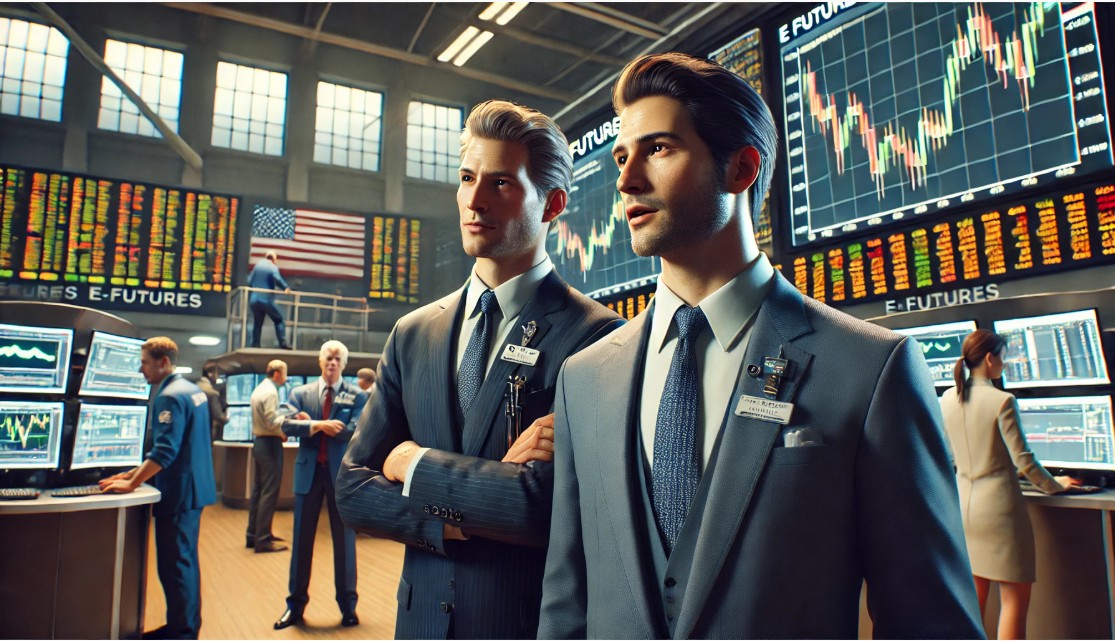Futures trading is a fascinating and potentially lucrative aspect of financial markets. By understanding how to trade futures and mastering the critical elements of this trading style, individuals can unlock opportunities in commodities, currencies, indices, and more. This guide covers the essentials of futures trading, defines key terms, and provides practical tips to maximize the use of your futures broker. Additionally, real-life examples and case studies illustrate how futures trading works, highlighting both potential rewards and inherent risks.
Understanding Futures Trading
At its core, futures trading involves buying or selling a futures contract, an agreement to purchase or sell an underlying asset at a predetermined price on a specified future date. Unlike stocks or bonds, futures contracts do not represent ownership; they are derivative instruments tied to the price movements of the underlying asset.
Critical Elements of Futures Trading
- Leverage: Futures contracts allow traders to control large positions with relatively small amounts of capital. While this magnifies potential profits, it also increases exposure to significant losses.
- Margin Requirements: Futures brokers require traders to maintain a margin, a portion of the contract’s value, as collateral. Understanding initial and maintenance margin levels is crucial.
- Expiration Dates: Every futures contract has a specific expiration date. As this date approaches, traders must decide whether to close their position, roll it into a later contract, or accept delivery of the asset (if applicable).
- Liquidity: Liquidity varies across futures markets. Highly liquid contracts, such as crude oil or the S&P 500 futures, are easier to trade than less liquid contracts.
- Market Volatility: Futures trading often involves highly volatile assets, which can result in rapid price changes. Managing this volatility is key to long-term success.
- Risk Management: Implementing stop-loss orders, position sizing, and a clear trading plan helps mitigate losses.
Key Terms in Futures Trading
To effectively trade futures, familiarize yourself with the following terms:
- Futures Contract: The agreement to buy or sell an asset at a set price on a future date.
- Underlying Asset: The commodity or financial instrument tied to the futures contract (e.g., gold, wheat, or the Dow Jones Industrial Average).
- Long Position: A position where the trader agrees to buy the asset in the future.
- Short Position: A position where the trader agrees to sell the asset in the future.
- Open Interest: The total number of outstanding futures contracts for a specific market.
- Hedging: Using futures contracts to protect against adverse price movements in the underlying asset.
- Speculation: Trading futures to profit from price fluctuations rather than to hedge.
- Roll Over: Extending a position by closing one contract and opening another with a later expiration date.
- Clearinghouse: The entity that guarantees the integrity of trades by acting as the counterparty to both buyer and seller.
Utilizing a Futures Broker Effectively
A futures broker plays a critical role in your trading journey. Choosing the right broker can significantly impact your success. Here are tips to maximize your broker’s value:
- Leverage Their Expertise
Futures brokers, like those at E-Futures.com, offer deep market insights and trading strategies. Take advantage of their knowledge, especially if you’re new to futures contract trading. Ask about market trends, key data releases, and best practices. - Use Advanced Trading Platforms
Trading platforms such as CannonX by E-Futures.com provide cutting-edge tools for analysis, charting, and trade execution. Familiarize yourself with features like algorithmic trading, customizable indicators, and risk management tools. - Access Research and Education
The best futures trading brokers offer educational resources and market research. Use these to stay informed about economic indicators, geopolitical developments, and sector-specific trends. - Understand Fees and Commissions
Transparent pricing is vital. A competitive futures broker will disclose all costs upfront, ensuring no surprises. E-Futures.com’s reputation for clarity in pricing has earned them stellar reviews.
Real-Life Examples of Futures Trades
Example 1: Hedging in Agriculture
A wheat farmer anticipates a bumper crop but fears prices may drop before harvest. To mitigate this risk, the farmer takes a short position in wheat futures. If wheat prices fall, the profits from the short futures position offset the lower market price of the crop.
Risk Level: Moderate. While hedging reduces exposure to adverse price movements, it doesn’t eliminate all risks, such as unexpected weather events.
Example 2: Speculating on Crude Oil Prices
An experienced futures trader speculates that geopolitical tensions will drive up crude oil prices. The trader takes a long position in crude oil futures. When prices rise as anticipated, the trader closes the position.
Risk Level: High. Speculation involves predicting price movements, which can be unpredictable and lead to substantial losses.
Example 3: Rolling Over S&P 500 Futures
A portfolio manager uses S&P 500 futures to maintain market exposure but doesn’t want the contract to expire. As the expiration date approaches, they roll over the position by closing the current contract and opening a new one with a later date.
Risk Level: Low to Moderate. Rolling over ensures continuity but involves additional transaction costs and potential market slippage.
Cautionary Notes on Risk
While the potential for profit in futures trading is enticing, traders must approach it with caution. Here are some risks to consider:
- Leverage Risk: High leverage amplifies both gains and losses. A small price movement against your position can result in significant financial loss.
- Market Risk: Prices can move unpredictably due to economic, political, or natural events.
- Liquidity Risk: Less liquid markets may have wider bid-ask spreads, increasing trading costs.
- Emotional Risk: Emotional trading can lead to impulsive decisions, which often result in losses.
- Counterparty Risk: Although clearinghouses reduce this risk, understanding the creditworthiness of your broker is essential.
Why E-Futures.com Stands Out
E-Futures.com is a premier destination for futures traders of all experience levels. Here’s why:
- Top-Performing Platform: CannonX is a state-of-the-art trading platform offering advanced tools for analysis and execution.
- 5-Star Ratings: With outstanding reviews on TrustPilot, E-Futures.com’s commitment to customer satisfaction is evident.
- Decades of Experience: Their seasoned professionals bring invaluable insights to traders navigating complex markets.
- Regulatory Excellence: E-Futures.com’s adherence to National Futures Association (NFA) guidelines and other regulatory standards ensures a safe and transparent trading environment.
- Comprehensive Support: From personalized trading plans to responsive customer service, they provide unmatched support.
Case Study: A Futures Trader’s Journey
Background: Jane, a novice trader, sought to diversify her portfolio with futures. She partnered with E-Futures.com, leveraging their educational resources and the CannonX platform.
Action: Jane started with a small position in gold futures, guided by her broker’s advice. She used stop-loss orders to limit risk and closely monitored market news.
Outcome: After three months, Jane’s careful strategy resulted in a 15% portfolio gain. She credited her trading to E-Futures.com’s expertise and user-friendly platform.
Risk Level: Moderate. Jane’s use of stop-loss orders mitigated risk, but her success depended on diligent market analysis.
Futures trading offers diverse opportunities for hedging, speculation, and portfolio diversification. By mastering key elements such as leverage, margin, and risk management, and by familiarizing yourself with essential terminology, you can navigate this complex market effectively. Partnering with a reliable futures broker, such as E-Futures.com, ensures you have the tools and support needed to make informed decisions.
E-Futures.com’s CannonX platform, stellar reputation, and commitment to regulatory compliance make it an ideal choice for anyone looking to trade futures contracts responsibly. Remember, while futures trading can be rewarding, it’s not without risks. Always trade with a clear plan and a cautious approach.
To open an account with E-Futures.com, please click here.
Ready to start trading futures? Call US 1(800)454-9572 – Int’l (310)859-9572 email info@cannontrading.com and speak to one of our experienced, Series-3 licensed futures brokers and start your futures trading journey with E-Futures.com today.
Disclaimer – Trading Futures, Options on Futures, and retail off-exchange foreign currency transactions involves substantial risk of loss and is not suitable for all investors. Past performance is not indicative of future results. You should carefully consider whether trading is suitable for you in light of your circumstances, knowledge, and financial resources. You may lose all or more of your initial investment. Opinions, market data, and recommendations are subject to change at any time.
Important: Trading commodity futures and options involves a substantial risk of loss. The recommendations contained in this writing are of opinion only and do not guarantee any profits. This writing is for educational purposes. Past performances are not necessarily indicative of future results.
**This article has been generated with the help of AI Technology. It has been modified from the original draft for accuracy and compliance.
***@cannontrading on all socials








